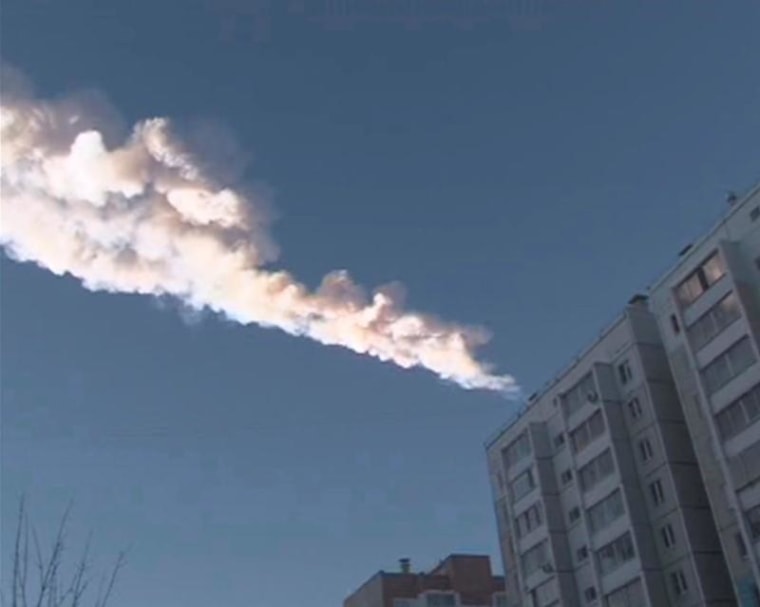CAPE CANAVERAL Fla. — Scientists say an asteroid that exploded last year over the Russian city of Chelyabinsk, leaving more than 1,000 people injured by flying glass and debris, collided with another asteroid before hitting Earth.
Analysis of a mineral called jadeite that was embedded in fragments recovered after the explosion show that the asteroid's parent body struck a larger asteroid at a relative speed of about 3,000 mph (4,800 kilometers per hour).
"This impact might have separated the Chelyabinsk asteroid from its parent body and delivered it to the Earth," lead researcher Shin Ozawa, with the University of Tohoku in Japan, wrote in a paper published this week in the journal Scientific Reports.

The discovery is expected to give scientists more insight into how an asteroid may end up on a collision course with Earth. Scientists suspect the collision happened about 290 million years ago.
Most of the 65-foot (20-meter) wide asteroid that blazed over Chelyabinsk in southwestern Siberia on Feb. 15, 2013, was incinerated in a bright fireball, the result of frictional heating as it dropped through the atmosphere at 42,000 mph (67,600 kph). But many small fragments survived.
The asteroid was traveling almost 60 times the speed of sound and exploded about 18 miles (30 kilometers) above ground, releasing nearly 30 times as much energy as the Hiroshima atomic bomb.
Analysis of recovered Chelyabinsk meteorites revealed an unusual form of jadeite entombed inside glassy materials known as shock veins, which form after rock crashes, melts and re-solidifies.
Jadeite, which is one of the minerals in the gemstone jade, forms only under extreme pressure and high temperature. The form of jadeite found in the Chelyabinsk meteorites indicates that the asteroid’s parent body hit another asteroid that was at least 492 feet (150 meters) in diameter.
Scientists are still analyzing fragments of the asteroid and calculating its precise path toward Earth.